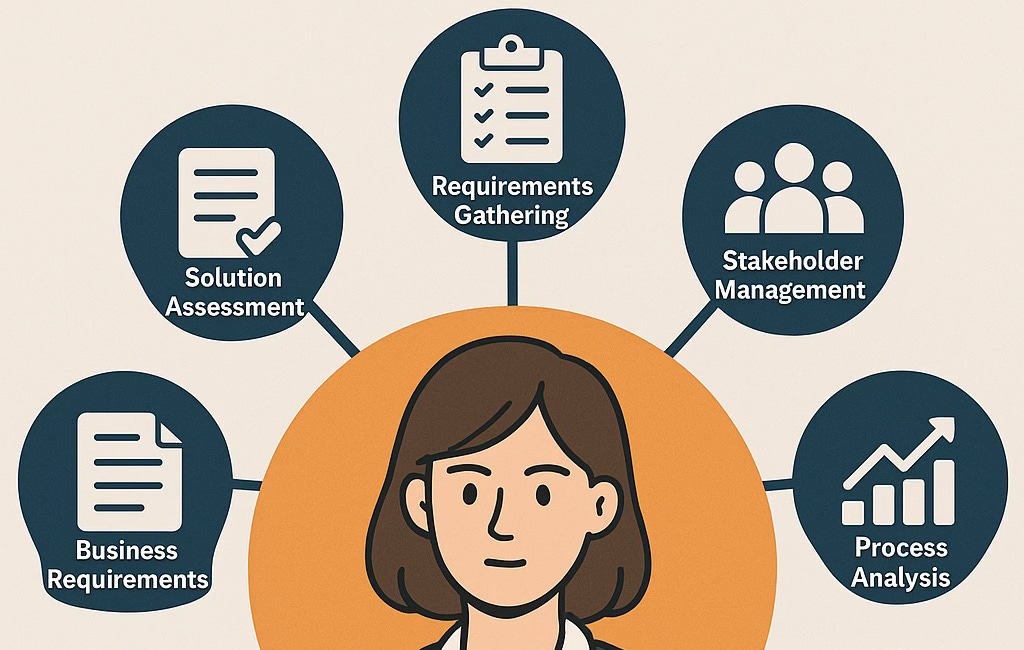Stakeholder Analysis in Action: The LuminTech Case Study
A step-by-step guide to mapping influence, building engagement strategies, and driving business transformation.
When we started Analyst Harbor, one of our most important goals was to bring theory to life — to bridge the gap between learning and doing. That’s why we’re launching a new series called LuminTech Case Study.
In the first article, we introduced our imaginary company. If you missed that introduction, we recommend starting there — it sets the foundation for everything that follows.
Kicking Off Our Business Analysis Series: The LuminaTech Case
We’re excited to take the next step in our journey through business analysis.
Today, we’re moving forward with stakeholder analysis.
Each topic in this series will follow a two-part structure:
First, we’ll explore the key terminology and explain what it actually represents — helping you form a clear understanding of the concept. Then, we’ll apply that knowledge by preparing practical outputs based on our imaginary company, including templates you can use for hands-on practice.
Let’s dive in.
🧠 Why Stakeholder Analysis Matters
Stakeholders can make or break a business transformation. Whether they are driving strategy, designing products, providing support, or simply using the end product, each stakeholder has unique expectations, motivations, and influence over a project’s success.
Stakeholder analysis is the foundation for aligning efforts, minimizing friction, and ensuring collaborative success. It involves identifying relevant stakeholders, understanding their level of power and interest, and crafting engagement strategies tailored to each one.
In LuminaTech’s case—shifting from one-time product sales to a subscription-based model—this analysis becomes a critical early activity.
🔦 Project Context
In June 2025, LuminaTech initiated a strategic shift toward a subscription-based model for its flagship smart lighting product, LumiGlow.
As a Business Analyst on this transformation, you were tasked with leading the stakeholder analysis to ensure alignment and buy-in across the organization.
👤 Who Are the Stakeholders in LuminaTech?
Here’s a breakdown of key people involved and their relationship to the project:
Thomas Bennett, CEO – Focused on strategic growth, innovation, and ROI. Strong decision-maker and sponsor of the transformation.
Claire Howell, Product Manager – Responsible for LumiGlow’s product roadmap and innovation. She plays a key role in turning the new model into concrete features.
David Marsh, Marketing Lead – Concerned with customer perception and how the new model is communicated to the market.
Andrea Shaw, Customer Support Lead – Represents customer service concerns and ensures the support team is prepared to handle new types of requests.
John King, Lead Developer – Oversees architectural and technical feasibility of changes to the LumiGlow mobile app.
Evelyn Urban, Finance Manager – Evaluates the revenue model, pricing structure, and cash flow impact.
Pilot Group of Customers – End users who will provide feedback on usability, pricing perception, and ongoing value.
Let’s group our stakeholders and create a visual output that will support the next step — developing an effective engagement and communication strategy.
📊 Understanding Influence and Interest
Stakeholders were categorized based on their influence into four key segments.
High Power / High Interest: Thomas, Claire, and John. These stakeholders must be actively involved in all key decisions.
High Power / Low Interest: Evelyn. She should be kept satisfied with concise updates, especially on revenue forecasts.
Low Power / High Interest: Andrea and the customers. They should be informed and given a voice, especially through testing and surveys.
Low Power / Low Interest: External vendors or partners. These stakeholders are monitored but not heavily involved.
🛠 Engagement Strategies
Now that we've grouped stakeholders based on their level of influence and interest, we can move forward with developing a tailored engagement strategy.
The summary below outlines the recommended approach for engaging each stakeholder group effectively:
Executive Team: Monthly steering meetings with project status updates, KPIs, and strategic checkpoints. (Thomas)
Product and Development Teams: Weekly backlog grooming and product workshops to prioritize features and ensure feasibility. (Clair, John)
Support and Marketing: Targeted sessions for communication planning, customer onboarding flows, and FAQs. (Andrea, David, Evelyn)
Customers: Beta testing, post-feature surveys, and user interviews to gather early reactions to pricing, usability, and value.
💬 Communication Plan
The transition to a subscription model is the highest-priority project at LuminaTech. That’s why we’ve adopted the following communication plan to ensure alignment and clarity throughout the project.
Monthly updates to executive team via MS Teams and brief slide decks.
Weekly sessions with product and development core team via Jira and Miro.
Post-phase surveys with customers using Typeform or in-app pop-ups survey
Bi-weekly project status reports shared in Confluence and email newsletters to whole project team including support and marketing.
✅ Deliverables
We’ve now covered all the key aspects of stakeholder analysis, so let’s summarize the most common outputs from this phase.
Stakeholder register
Stakeholder matrix (e.g. power-interest grid)
Engagement strtegy
Communication Plan
🔚 Final Thought
Stakeholder analysis is more than a checklist — it’s the cornerstone of any successful transformation. By taking the time to understand who’s involved, what they care about, and how best to engage them, you lay the groundwork for better decisions, smoother collaboration, and lasting impact.
This first phase of the LuminTech Case Study shows how theory becomes actionable. In the next article, we’ll build on these insights and guide you through creating the actual deliverables — so you can practice, adapt, and apply them in your own projects.
Stay tuned.





